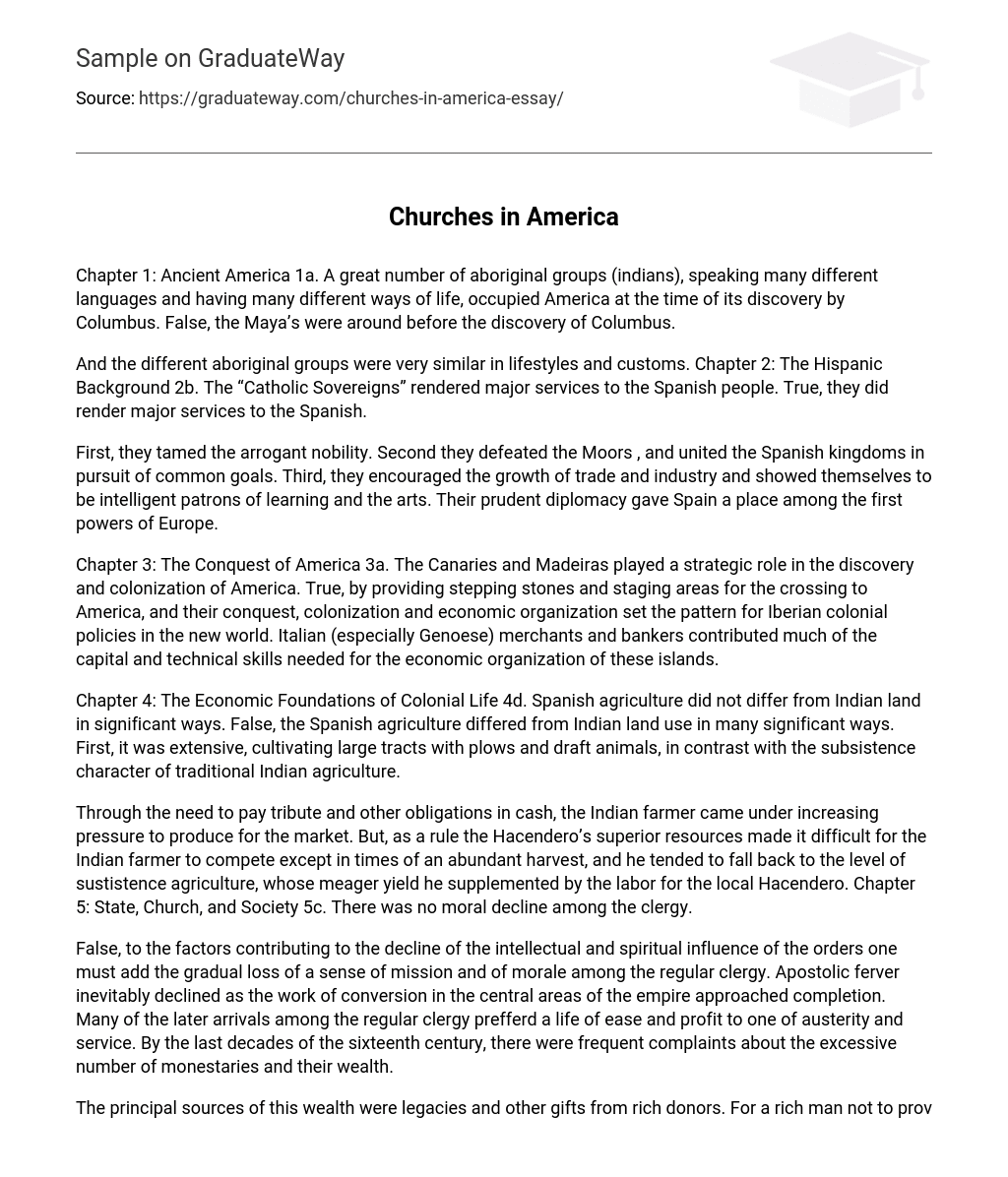Chapter 1: Ancient America. A great number of aboriginal groups (indians), speaking many different languages and having many different ways of life, occupied America at the time of its discovery by Columbus. False, the Maya’s were around before the discovery of Columbus. And the different aboriginal groups were very similar in lifestyles and customs.
Chapter 2: The Hispanic Background. The “Catholic Sovereigns” rendered major services to the Spanish people. True, they did render major services to the Spanish. First, they tamed the arrogant nobility. Second they defeated the Moors , and united the Spanish kingdoms in pursuit of common goals. Third, they encouraged the growth of trade and industry and showed themselves to be intelligent patrons of learning and the arts. Their prudent diplomacy gave Spain a place among the first powers of Europe.
Chapter 3: The Conquest of America. The Canaries and Madeiras played a strategic role in the discovery and colonization of America. True, by providing stepping stones and staging areas for the crossing to America, and their conquest, colonization and economic organization set the pattern for Iberian colonial policies in the new world. Italian (especially Genoese) merchants and bankers contributed much of the capital and technical skills needed for the economic organization of these islands.
Chapter 4: The Economic Foundations of Colonial Life. Spanish agriculture did not differ from Indian land in significant ways. False, the Spanish agriculture differed from Indian land use in many significant ways. First, it was extensive, cultivating large tracts with plows and draft animals, in contrast with the subsistence character of traditional Indian agriculture.
Through the need to pay tribute and other obligations in cash, the Indian farmer came under increasing pressure to produce for the market. But, as a rule the Hacendero’s superior resources made it difficult for the Indian farmer to compete except in times of an abundant harvest, and he tended to fall back to the level of sustistence agriculture, whose meager yield he supplemented by the labor for the local Hacendero.
Chapter 5: State, Church, and Society. There was no moral decline among the clergy. False, to the factors contributing to the decline of the intellectual and spiritual influence of the orders one must add the gradual loss of a sense of mission and of morale among the regular clergy. Apostolic ferver inevitably declined as the work of conversion in the central areas of the empire approached completion. Many of the later arrivals among the regular clergy prefferd a life of ease and profit to one of austerity and service. By the last decades of the sixteenth century, there were frequent complaints about the excessive number of monestaries and their wealth.
The principal sources of this wealth were legacies and other gifts from rich donors. For a rich man not to provide for the church in his will was a matter of scandal. A common procedure used to endow churches, convents and other religious institutions was to assume a mortgage( censo) on the landowners estate for a fixed amount where he/she agreed to pay the beneficiary an annual interest of five percent. people of the sun





